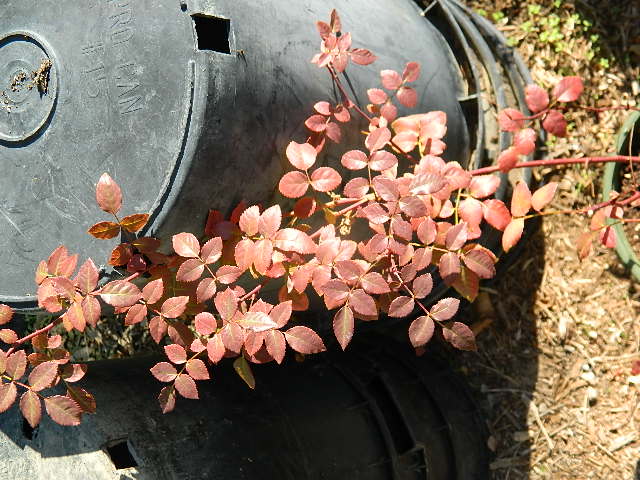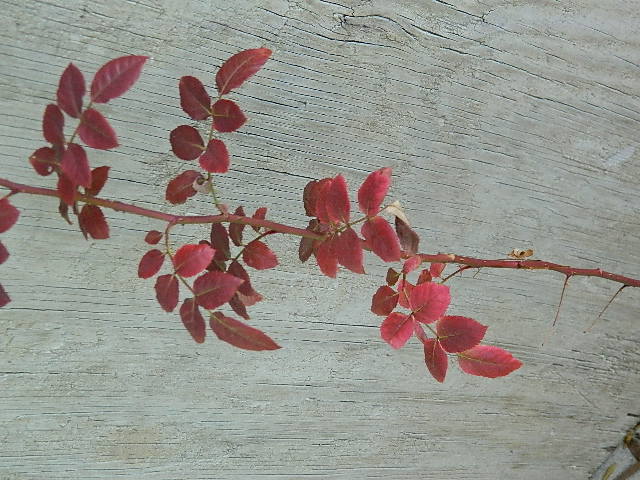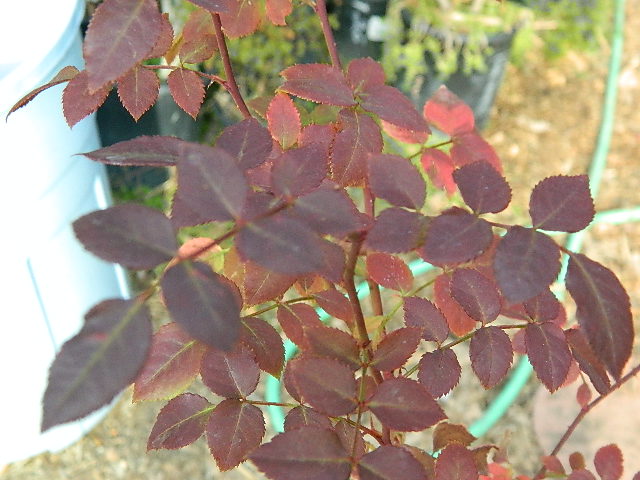"Possible niches for us to focus on:
-Development of unusual leaf shapes and colors. Very long strap like leaves, giant leaves, tiny leaves, red or blue leaves, variegated leaves.
-Very shade tolerant
-Unique insect or disease resistance. Japanese Beetles, Root Knot Nematodes, Rose Rosette Disease, Chilli Thrips, etc…
-Extreme drought tolerance
-Extreme cold tolerance
-Extreme poor soil tolerance
-Wet soil tolerance
What would be the best way to accomplish these goals."
For long narrow leaves, some Chinas have that trait, Palustris and Banksia also, so mixing these would be a good start.
For giant leaves, some Hybrid Perpetuals and HTs have large leaves. Cross and cull for large foliage. We’d have to select carefully against blackspot.
For tiny leaves, Roxburghii, some Chinas, miniatures and polys would be good things to mix for this.
For red leaves, many teas have red new growth, and many deciduous varieties have red fall foliage and stems. Crossing these would be a good start.
For blue leaves, Glauca, Fedtschenkoana, several new and antique varieties have this. Cross different sources to try to intensify the blueness.
For variegated foliage, I don’t know of any non-virus induced ones, but with so many varieties in the world it wouldn’t surprise me if some of you know of one.
For textured foliage, Rugosa.
For shade tolerance, Hybrid Musks, some Chinas, some Bucks, some Albas. Anyone with a tree can select seedlings for this.
For unique insects and diseases, this would have to be done locally. It would be unethical to import dangerous insects.
For drought tolerance, do you have the willpower to withhold water, if yes, then this is simple. Use plastic sheeting if rain threatens.
Cold tolerance, tested locally.
Poor soil tolerance, home improvement stores sell sand, grow them in that. pH can be manipulated with sulfur and lime.
Wet soil tolerance, mud is easy to make. Palustris and Clinophylla are good starting points.
For edible hips, Rugosa, Roxburgii, Gigantea would be good starting points. Look for other varieties that have few internal hip hairs, Carefree Beauty and Old Blush come to mind as being pretty clean inside, there are many others. Look for varieties that have a high flesh to seed ratio. Nibble on your ripe hips, make notes on the flavor.
If each of us picks a niche project to work on, we, as a group, will have access to several unique specimen.


